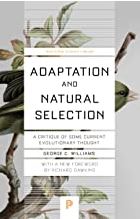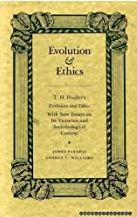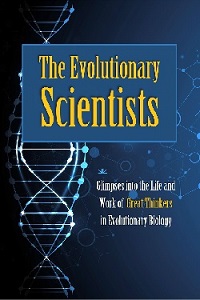|
TRANSLATE THIS ARTICLE
Integral World: Exploring Theories of Everything
An independent forum for a critical discussion of the integral philosophy of Ken Wilber
 David Christopher Lane, Ph.D.
Professor of Philosophy, Mt. San Antonio College Lecturer in Religious Studies, California State University, Long Beach Author of Exposing Cults: When the Skeptical Mind Confronts the Mystical (New York and London: Garland Publishers, 1994) and The Radhasoami Tradition: A Critical History of Guru Succession (New York and London: Garland Publishers, 1992). David Christopher Lane, Ph.D.
Professor of Philosophy, Mt. San Antonio College Lecturer in Religious Studies, California State University, Long Beach Author of Exposing Cults: When the Skeptical Mind Confronts the Mystical (New York and London: Garland Publishers, 1994) and The Radhasoami Tradition: A Critical History of Guru Succession (New York and London: Garland Publishers, 1992).If there's a singular topic Integral students need to be educated on it is evolutionary theory, given their frequent but uninformed use of the term "evolution". These short biographical chapters about evolutionary theorists have been written by different philosophy students of professor David Christopher Lane. (FV)
THE EVOLUTIONARY SCIENTISTS
Glimpses into the Life and Work of Great Thinkers in Evolutionary Biology
Coyne|
Crick|
Darwin|
Dawkins|
Diamond|
Dobzhansky|
Eldridge|
Gould|
Haldane|
Hamilton |
Lamarck|
Lovelock|
Mayr|
Mendel|
Monod|
Spencer|
Trivers |
Wallace |
Weismann |
Williams |
E.O. Wilson
George C. WilliamsJoseph PerezA pivotal figure in the modern theory of evolution, American evolutionary biologist George Christopher Williams is best known for furthering the theory of gene-level natural selection, as well as for his refutation of the then widely accepted view of group selection. His work reshaped the discussion of evolutionary theory, serving as the foundation for the works of other evolutionary thinkers such as John Maynard Smith and Richard Dawkins, who cite him as inspiration for their own acclaimed contributions; notably, The Evolution of Sex and The Selfish Gene respectively. George C. Williams George C. Williams, born on May 12, 1926 in Charlotte, North Carolina, received his Ph.D. for his work on ichthyology, the ecology of fish, while at UCLA. He served as a foundational member of the nascent Department of Ecology and Evolution at Stony Brook University for 30 years before his death at the age of 83 on September 8, 2010 due to Parkinson's disease. Often described as humble and open minded, he maintained that it is possible that new and better ideas may build upon or refute his own. In his 1966 book Adaptation and Natural Selection, the most influential of his works, Williams introduced the evolutionary community to a gene-centric theory of natural selection, which states that natural selection works at the level of a gene instead of on the level of a group or a species. In doing so, Williams would spark an ongoing debate over group selection against gene-level selection. Adaptation and Natural Selection: A Critique of Some Current Evolutionary Thought—published almost a decade after the monumental 1957 paper that brought him the acclaim and attention of the evolutionary community—criticizes the theory of evolutionary progress and the prevailing theory of group selection. The book lays out his criticisms of the current understanding of natural selection's workings for wrongly attributing natural selection to the betterment of the group or species to which the individual belonged, rather than to the advantage of the survival of the individual. His own view held that populations do not actively seek to prevent extinction; individuals do. The dominant view of group-level natural selection gave rise to another idea, 'pan-adaptationism', the theory that every feature has an evolutionary adaptation, which Williams also criticises in Adaptation and Natural Selection. Williams famously stated that natural selection should be attributed to the simplest option. Claiming that gene-level natural selection ought to be preferred over the more convoluted option at the species or group level, he argued that alleles are the simplest variables, and thus, the most likely level on which natural selection takes place. Alleles, he postulated, would be introduced into a population and subsequently rise in frequencies starting at values as low as zero. Natural selection would operate on the immediate fitness effects brought on by alleles in the individuals. Therefore, for biologists seeking to make sense of evolutionary histories, adaptation should only be considered as a last resort when all other explanations have failed. As a result, Williams believed that evolutionary progress would not be made through selection, and raised questions over the basis for the theory of evolutionary progress. Biologist E. O. Wilson would further the ideas presented in Williams' first book. Dawkins' The Selfish Gene, listed as the most influential science book of all time by the Royal Society, would derive its title and inspiration almost entirely from Williams' principal theory in Adaptation and Natural Selection. Williams' theory was later criticized for downplaying the role that genetic integration, or, multiple gene inheritance, plays in natural selection. In his 1957 paper “Pleiotropy, Natural Selection, and the Evolution of Senescence”, Williams introduced the still prevalent explanation for senescence, or biological aging, with his antagonistic pleiotropy hypothesis. Essentially, one gene can be responsible for controlling more than one trait. One of the traits may be beneficial to the organism's fitness, while the other may be adverse. Williams claimed that if one gene served beneficial in increasing an organism's reproduction early in life and encourage aging later in life, it would persist in evolution due to the benefits provided early on outweighing the detriments that arise later. Organisms can never be able to reach “perfection” by design, since each organism's beneficial traits are accompanied by imperfect traits. This results in what could be seen as the hindrance of envisioned evolutionary progress. In the same paper, Williams introduced the grandmother hypothesis, which claims that menopause is an adaptation that is evolutionarily advantageous for women, claiming that menopausal women benefit from being able to refocus efforts that were once spent in reproduction to supporting existing offspring. This shift removes the risk of age-related reproduction threats and helps ensure the survival of the women's genes. However, this hypothesis has been widely criticized for failing to explain why the first grandmother would halt reproduction seemingly without cause, as well as for the lack of explanation for the longevity of male sex cells. One of his last notable contributions to the field of evolutionary theory was his 1992 book Natural Selection: Domains, Levels and Challenges. Williams would go on to lessen his criticism of group selection and include some of its functions and occurrences as exceptions to his original theory. This was largely due to the notion that group selection and multilevel selection can occasionally occur in nature, though he had previously believed such occurrences to be impossible in his gene-centric theory. As a result, Williams took on a more inclusive view, while still maintaining his original allele-driven evolution theory. Williams entertained the possibility of certain instances of group selection such as adaptive radiation or diversification into different forms largely due to change in environment, which can be best explained through group selection. In a sense, William's original theory holds as a microevolutionary explanation, but did not take into account certain macroevolutionary events over long periods of time. This led to the adoption of an almost hybrid stance on the gene-centric and group-level natural selection issue later on in his career. Williams would go on to be awarded the Daniel Giraud Elliot Medal in 1992 and the Crafoord Prize in 1999 for his work in collaboration with Ernst Mayr and John Maynard Smith. Further Reading1. Sex and Evolution, Princeton University Press, 1975. 2. Adaptation and Natural Selection, Princeton University Press (1966) 3. Evolution and Ethics: T.H. Huxley's Evolution and Ethics with New Essays on Its Victorian and Sociobiological Context , Princeton University Press (August 21, 1989)
   MSAC Philosophy Group
The theory of evolution has a long history. However, it was not until Charles Darwin and Alfred Russel Wallace discovered that the wide variety of species we presently see were largely the result of natural selection did evolutionary studies have a solid, scientific basis. In the past one hundred and sixty years, a number of eminent biologists have contributed to our understanding of how complex life forms emerged from simpler, more rudimentary ones. Comment Form is loading comments...
|